What is 'Fill & Flush' that can cut the time to unload passengers from the plane in half?

When unloading passengers from an airplane, it is common to unload them in order from the front. However, passengers getting off must unload their luggage from the racks, which slows down the flow of passengers and takes time. As a way to solve this problem, software engineer Joseph Combs has proposed a method called ' Fill & Flush ' and has published its simulation.
Fill & Flush - A Better Way to De-Plane
'Fill & Flush' advocated by Mr. Combs consists of three stages: 'Fill face', 'Flush phase' and 'Wave phase'.
During the 'Fill phase', flight attendants will instruct the 'passenger closest to the aisle' to stand and fill the aisle in an in-flight announcement. Passengers in the aisle then collect any luggage that is overhead or under the seat. Other passengers remain seated. When all passengers in the aisle have collected their luggage, it will shift to the 'Flush phase' and all passengers will get off the plane all at once. And when the last standing person exits the plane, the 'passengers closest to the aisle' stand in the aisle. 'Wave phase' is the stage of moving from the Flush phase to the Fill phase again, and as a result, the Fill phase and the Flush phase are repeated.
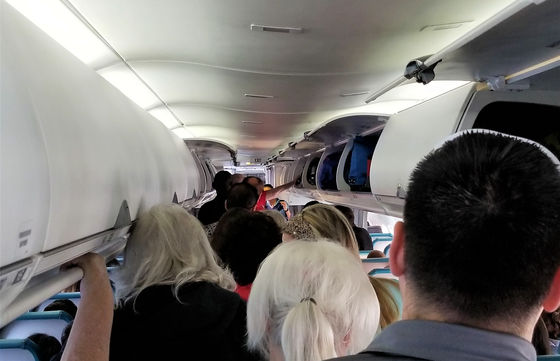
It is possible to try the 'Fill & Flush' simulation on the following page.
Fill & Flush - A Better Way to De-Plane
https://www.fillandflush.com/simulate
Set Rows (number of rows of seats), Columns (number of rows of seats), Average Walk Speed (passenger walking speed), Average Row Height (seat front and rear interval), and click 'Run Simulation'.

Then, an animation that reproduces the state of the cabin is played under the button. The left side is the conventional disembarkation process, and the right side is the 'Fill & Flush' simulation.

Passengers in row C first stand in the aisle and retrieve their baggage from overhead bins.

However, in the traditional disembarkation process, when the passenger at the front of the aisle row disembarks, the passengers in the same row go out into the aisle to retrieve their luggage and disembark. On the other hand, 'Fill & Flush' waits until the passengers in row C who are lined up in the aisle have finished taking out their luggage, and when everyone has taken out their luggage, they disembark all at once.
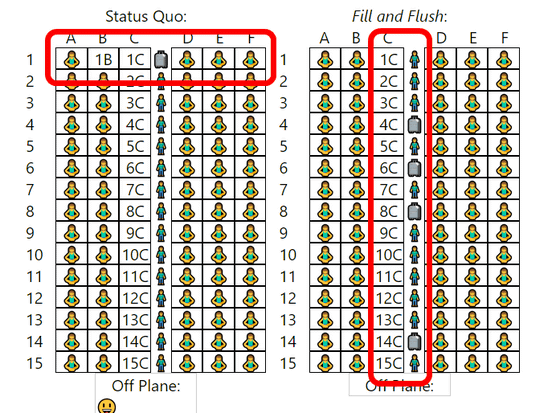
The traditional disembarkation process is to disembark the plane in order from the front. 'Fill & Flush' is a flow in which the passengers in the D row go out to the aisle all at once after the passengers in the C row get off.
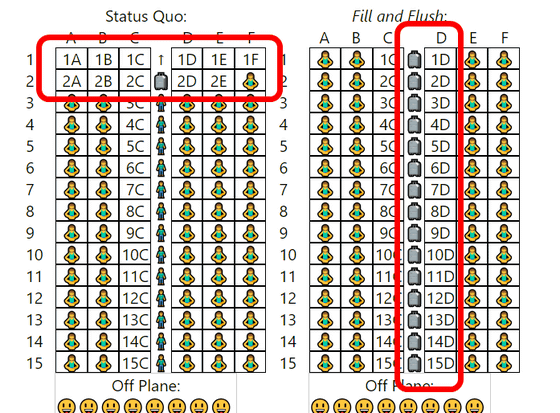
Below the seat map is the number of passengers who have disembarked. In the simulation, 'Fill & Flush' succeeded in unloading more passengers in the same time.
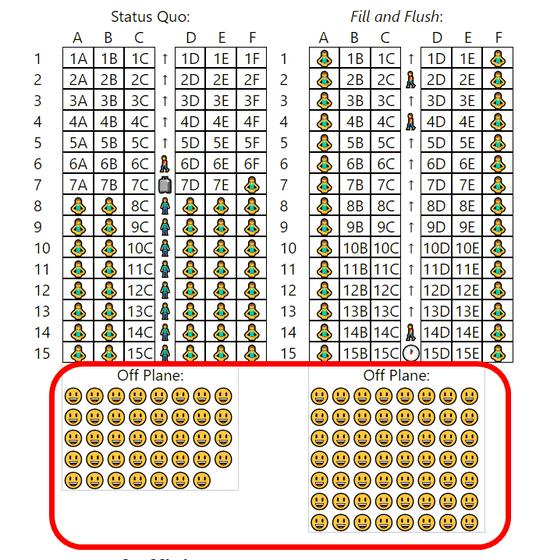
At the stage when all passengers disembarked with 'Fill & Flush', there were still about 30 people remaining in the conventional disembarkation process.
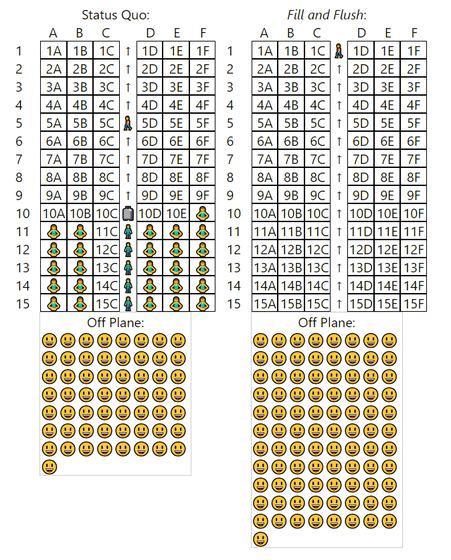
Combs claims that the use of 'Fill & Flush' can reduce the time it takes passengers to deplane by about 50%, adding, 'This would allow grocery stores to have multiple cash registers instead of just one, and more checkouts.' It's like allowing people to be served at the same time: 'Fill & Flush' makes the disembarkation process faster and more efficient.'
On the other hand, Mr. Combs said, ``How to educate passengers,'' ``How to deal with the elderly,'' ``How to deal with children and large groups,'' and ``How to handle classes such as first class and business class. I admit that problems such as 'what to do' and 'how to solve when troubles occur between passengers' are unresolved. Also, if you want to get off the plane with your family or friends, we suggest skipping the 'Fill phase' or negotiate with other passengers to adjust the order before and after.
Also, social news site HackerNews said, ``This simulation completely ignores human nature. 'The problem is that families usually sit in rows instead of columns. It's not ideal if you get separated from your friends in a busy airport.' He added, “As airlines added baggage fees to increase revenue, more carry-ons filled overhead bins. 'There was also an argument that the carry-on system itself, rather than the passenger's disembarkation process , was leading to an increase in disembarkation time.
Related Posts:







